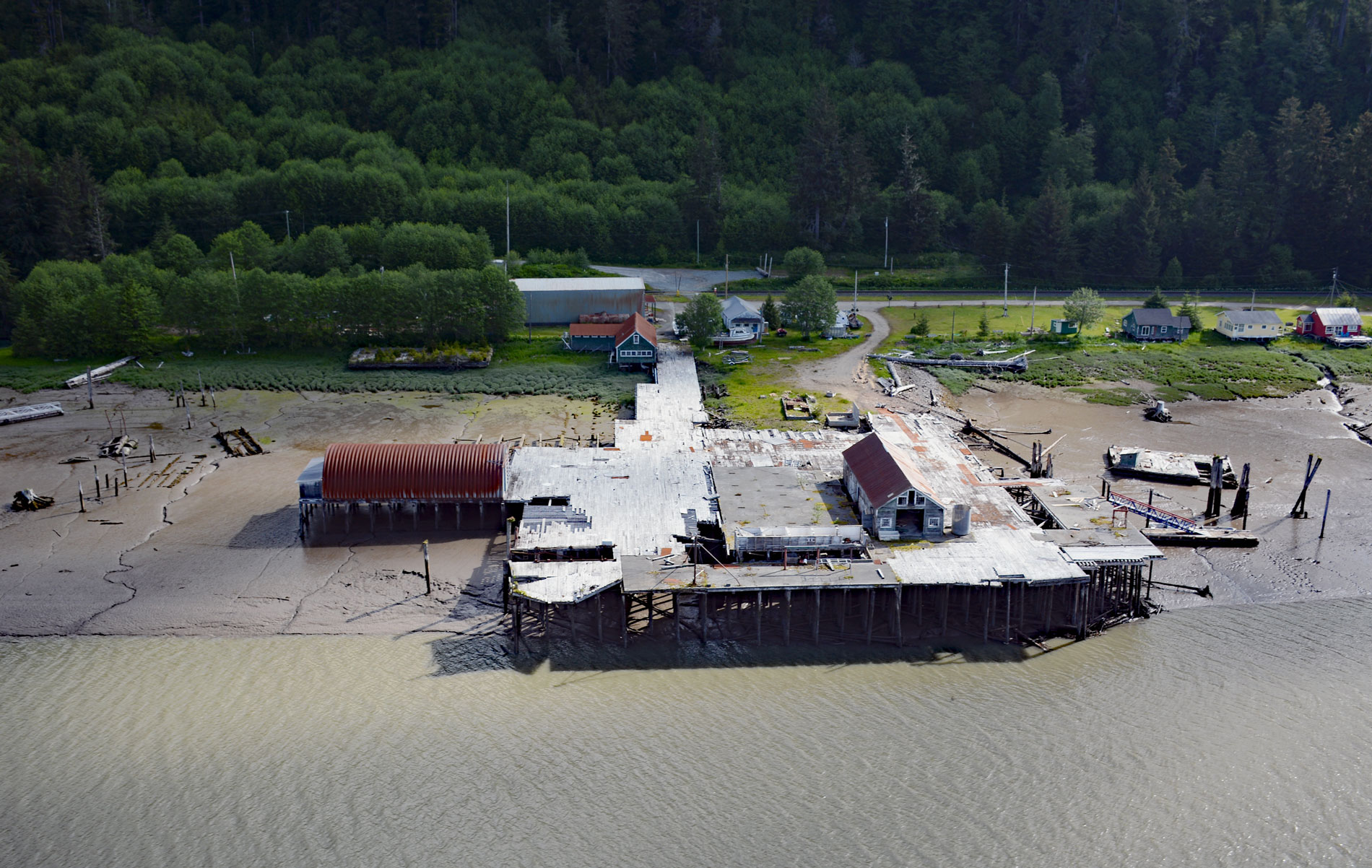Cassiar is a historic salmon cannery situated on the northern shoreline of Inverness Passage at the mouth of the Skeena River, about 67 miles (18 km) southwest of Terrace and 11 miles (18 km) southeast of Prince Rupert, British Columbia. The name is from the surrounding Cassiar Mining District and Cassiar Mountains and was originally derived from ‘Kaska’, the Kaska Dena First Nation name for this region. The Skeena River is one of the longest un-dammed rivers in the world and originates in the Coastal Mountains and flows 354 miles (570 km) draining a watershed of 13,442,533 acres (5,440,000 ha). Water from the Skeena River enters Chatham Sound through a series of channels with approximately 75 percent flowing equally through Marcus Passage and Telegraph Passage, while the remaining 25 percent flowing through Inverness Passage between the Tsimpsean Peninsula to the north and Smith Island to the south. The Tsimpsean Peninsula is mostly underlain by metamorphic and igneous intrusive rocks, and at the Cassiar Cannery the bedrock consists of metasedimentary schists that developed during the Paleozoic and early Mesozoic.
The archaeological record from this area spans at least 5,000 years and is represented by a series of three cultural traditions. The earliest occupation is characterized by shallow midden accumulations dating from 3,000 BC to 1,500 BC with barbed harpoons, adze-blades and points, bone wedges and chisels, canine tooth pendants, beaver incisors, bird-bone tubes and beads, and a variety of bone awls and points. From about 1,500 BC to 500 AD there is a rapid midden build-up, reflecting larger villages with larger houses, and probably a substantial population increase. Ground-slate points occur in abundance, and ornamental artifacts such as labrets and red-ochre pigment balls, as well as ground stone tools. The first trade items are present, including obsidian, amber and dentalia. From 500 AD to the early 1800s, house pit size and associated materials reflect ranked village structure, and archaeological excavations have yielded art depicting a variety of animals, a wide range of bone and stone tools, and personal objects such as combs and pins. In 1876, the first salmon cannery on the Skeena River was built at Inverness, about 3 miles (5 km) northwest of Cassiar, and the salmon canning industry grew quickly. In 1889, Alfred E. Green purchased property and built a cannery on Inverness Passage to participate in the salmon boom and in 1903 he sold the facility to the Cassiar Packing Company. By 1905, there were 12 canneries operating near the mouth of the Skeena River.
The canneries on the Skeena River were essentially self-sufficient small towns. Cassiar had a store, doctor, office, cookhouses, machine shops, bunkhouses, manager houses, blacksmiths, shipwrights, net lofts, all the canning, and processing equipment, and power production. Internally, the fishing industry operated without money and tokens or charges for food, nets, and fuel were levied against a personal account and that was debited against paychecks. In 1914, the Grand Trunk Railroad connected the Skeena canneries to Prince Rupert, and beginning in the 1920s, the number of Skeena canneries began to decline. Cassiar Cannery was the last operating salmon cannery on the Skeena River, and in 1983, it went out of business on Labour Day weekend. Today the cannery no longer processes salmon, but the facility is supported by boat repairs and restorations, tourism, reclaiming red cedar and spruce from salvaged logs, and estuarine research. Read more here and here. Explore more of Cassiar and the Skeena River here:

